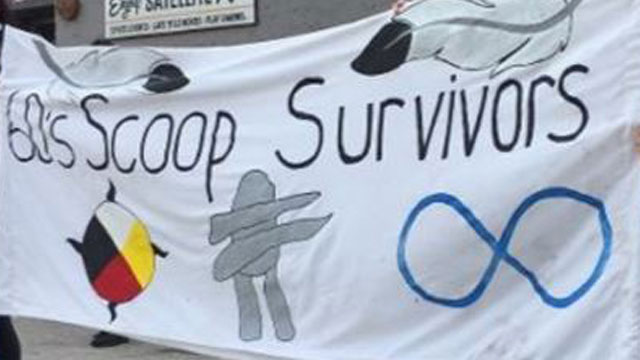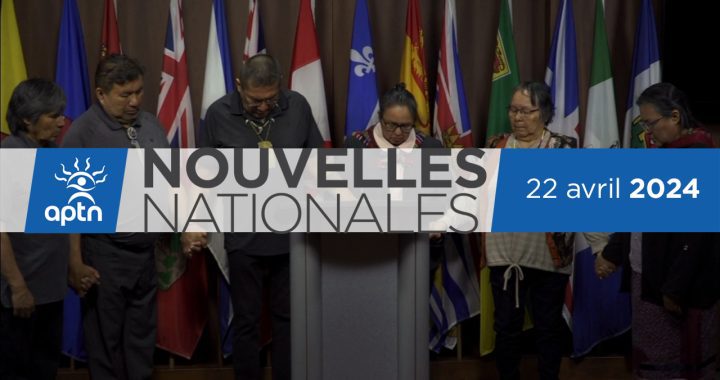
A banner in support of '60s Scoop survivors. Photo: APTN file
Judges have signed off on the final compensation payment for ‘60s Scoop survivors, according to the lead lawyer on the class-action settlement.
“There are a lot of cheques (and direct deposits) to go out,” confirmed Doug Lennox of Klein Lawyers.
“They should be completed by mid-August.”
Eligible survivors are owed a total of $25,000 each as part of the $875-million Sixties Scoop Settlement Agreement reached with the federal government in 2018.
The agreement compensates Indigenous children for loss of cultural identities after they were “scooped” from their families and placed with non-Indigenous caregivers between Jan. 1, 1951 and Dec. 31, 1991.
Indigenous children
An estimated 25,000 to 30,000 Indigenous children – known as adult survivors – were affected. (Métis and non-status First Nations people were excluded from the settlement.)
Lennox is the lead spokesperson for the four law firms representing claimants in the settlement.
“It’s good [claimants] can put this behind them,” he said of the final payment.
“I hope it provides them some comfort and they can move forward.”
The law firms earned $75 million for their work and a new Sixties Scoop Healing Foundation received $50 million. Any interest accrued on the settlement funds is directed towards the Foundation, according to the agreement.
Compensation claims
Collectiva, the compensation claims administrator, received 34,785 applications by the application deadline. It has so far approved 20,495 claims and denied 12,068, said its latest post on the settlement’s website.
A further 267 claims have the right to reconsideration and 383 require more information, the post said.
Lennox said the settlement agreement funding formula provided an initial $500 million for compensation. But when the number of successful claims exceeded 20,000, the federal government put in additional funds up to a maximum of $250 million.
“We wanted to make sure that every eligible claimant got at least $25,000 each, and that nobody’s payment was reduced or further delayed because there were too many claimants,” Lennox said from Vancouver. “Hence, the requirement on the federal government to provide additional funding once we went beyond 20,000 approved claims.”









